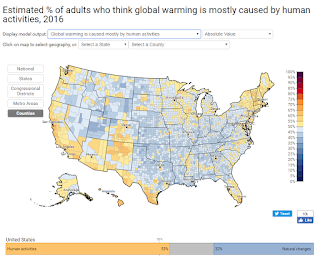While
preparing for today’s lecture, I enjoyed reading Verplanken et al.’s (2008)
article about opportunities to discontinue and change habits. As Ray also highlighted
in class, the researchers found that the likelihood of changing a habit
increased during a transformational moment in the individual’s life—in the case
of the study participants, during a move, although both Ray and the researchers
suggested that it could also occur during other major life events (i.e. going
to college or having a child).
The
researchers determined that these major life events, when combined with values
that are associated with the target behavior, created circumstances that caused
individuals to be more likely to change their habits. The researchers
specifically studied commuting behavior and found that individuals who were
environmentally-concerned and moved were more likely to travel to work using public
transportation, as compared to others who were similarly concerned and did not
move, or did move and were not concerned.
As an aside, I think that it would have been helpful if the
researchers determined if the respondents planned to utilize public
transportation before their move; personally, I switched from using a car to
public transportation after I moved into my first apartment, but I chose my
apartment purposefully so that I would be within walking distance of the train.
I suppose the detail could be academic, but I think it would be interesting to
know if the study respondents planned to change their behavior beforehand, or
if they hadn’t given much thought to it previously but were open to it after moving.
Regardless,
the study still suggests that there are interesting intervention opportunities
available to individuals who are entering these major life events. I assume
that some of these events are instinctively capitalized upon by marketers or
institutions; many of the products available that are “absolutely necessary”
for both college students and new parents are extensive and likely not too
essential, and universities host organization fairs early in the school year
for students to get more involved on campus (an example which Ray has
admittedly already discussed in class). However, we can certainly take advantage
of these opportunities with thoughtfulness and intention.
 |
| Not necessary, but I do see some potential here. |
To
continue with the moving example, I imagine that there could be an interesting
intersection with the community/Eco-Team based approach. If a community has
their own Eco-Team, they can welcome new residents to the neighborhood with
information about recycling, public transportation, the local farmer’s market,
and any other useful procedural knowledge from which they may benefit. The team
can then invite them to become a member of the team and attend their regular
meetings. Such an approach wouldn’t be guaranteed to work, but I imagine that
there would be a higher chance of durability for those behaviors that are
tested due to their being introduced during this major life event. Plus, the
commitment/feedback associated with joining an Eco-Team could be a nice boost
to durability as well.
A few questions:
- Do you think there are other major life events during which we can encourage pro-environmental behavior change?
- Can you think of any habits that you picked up during one of these major life events? Or any that you tried but didn’t stick? Why or why not did they become a habit?
References
Verplanken, B., Walker, I., Davis, A., & Jurasek, M. (2008).
Context change and travel mode choice: Combining the habit discontinuity and
self-activation hypotheses. Journal
of Environmental Psychology, 28.







